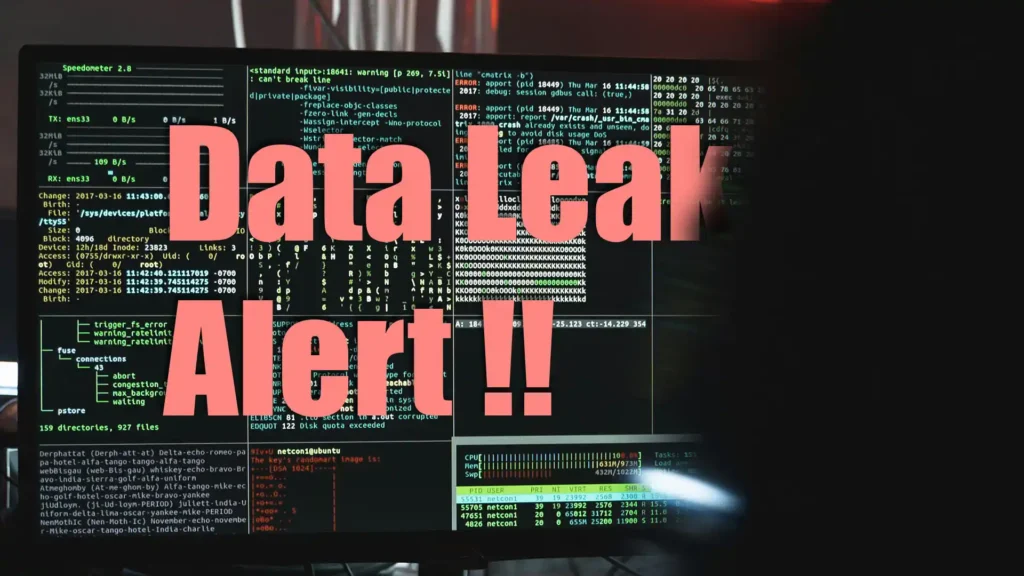The news is alarming!
So, you’ve probably heard the buzz there’s been a massive data breach. We’re talking 16 billion login records out in the wild. That’s basically two accounts for every person on the planet! Yeah, it’s that big.
It’s one of the biggest leaks ever, and everyone from regular folks to tech giants is scrambling. So let’s break this whole mess down:
What happened, how it happened, who could be behind it, what companies are doing about it, and most importantly what you can do to stay safe.
Grab a coffee, and let’s dig in.
What Just Happened?
Imagine this some massive digital vault stuffed with billions of usernames, passwords, and login credentials just got popped open. That’s what went down.
Researchers from Cybernews found around 30 different datasets floating around online. These datasets hold a total of 16 billion records.
And we’re not talking random junk—this includes logins for Google, Apple, Facebook, Telegram, GitHub, VPNs, and even some government services.
And here’s the kicker these aren’t just recycled leaks. Except for one dataset with 184 million older records, most of this stuff is fresh. The largest single set had 3.5 billion records, possibly linked to Portuguese-speaking users.
Others were tied to Russian services, Telegram, or just labeled “credentials.” It’s a chaotic dump of personal data, and it’s dangerous because it’s recent.
How Did This Happen?
Okay, so how does something like this even happen?
Most of the data looks like it came from infostealer malware.
This nasty software sneaks onto your devices and quietly grabs all your login info while you’re chilling and watching cat videos.
It steals everything—URLs, usernames, passwords, cookies, and even tokens that let hackers log in without passwords.
Once the malware does its dirty work, the stolen info gets dumped into giant databases.
These databases often sit on unprotected cloud storage or misconfigured servers like Elasticsearch, basically open doors for anyone to peek in.
Now, this leak was spotted quickly. But even a short exposure is long enough for bad actors (or researchers) to grab copies. And honestly, leaks like this are happening every few weeks now. That’s the scary part.
Who’s Behind It?
Here’s where things get spooky, we don’t really know who’s behind this.
Could be cybercriminals trying to make a quick buck selling your info on the dark web. Or maybe “researchers” gathering data to analyze breaches but being super careless about it.
Either way, this kind of data is pure gold for hackers. Even if less than 1% of the data works, that’s still millions of accounts they can hijack. And since we don’t know who’s controlling the data dumps, it’s impossible to trace the intent or stop them.
Feels like a ticking time bomb, doesn’t it?
What Are Companies Doing About It?
Tech giants like Google, Apple, and others are probably having emergency meetings right now.
While there’s no official statement yet, here’s what companies usually do in situations like this:
- Tightening security: Doing internal audits to find and fix weak spots, especially unsecured databases.
- Pushing MFA (multi-factor authentication): Encouraging users to add an extra verification step.
- Monitoring threats: Watching dark web forums for signs that stolen data is being sold or used.
- Upgrading defenses: Investing in better encryption, zero-trust policies, and faster threat detection tools.
Some like Google are also promoting passkey, a safer, password-free login method.
But let’s be real, they all need to step up big time to stop this stuff from becoming the new normal.
How Can You Stay Safe?
Now to the most important part: how do you protect yourself? The breach is massive, but don’t panic. You’re not powerless.
Here’s your action plan:
Change Your Passwords NOW
If you use services like Google, Apple, Telegram, etc. go change your passwords.
Make them strong (12+ characters, mix of symbols, numbers, and letters).
And don’t reuse the same password across sites. That’s just asking for trouble.
Use a password manager like 1Password or LastPass if you’ve got too many to remember.
Turn On MFA (Multi-Factor Authentication)
This is your best friend right now.
Even if someone gets your password, they won’t get in without that second verification step.
Enable MFA everywhere, especially on email, bank, and social media accounts.
Check If You Were Leaked
Go to HaveIBeenPwned.com and plug in your email or phone number.
If you see a match, change those passwords immediately. Be Wary of Phishing
Hackers love using stolen data to send fake emails or texts.
They might pretend to be Google, your bank, or even your boss.
Don’t click sketchy links or download weird attachments. If you get a breach alert, go directly to the company’s website, and don’t trust the links in the message.
Freeze Your Credit (if needed)
If you’re worried that sensitive info (like your national ID or Social Security number) is out there, freeze your credit.
In the US, contact Equifax, Experian, or TransUnion.
It stops crooks from opening new accounts in your name.
Monitor Your Accounts
Keep an eye on your bank and card transactions.
Set up alerts for big purchases or logins from new devices.
If you spot something fishy, like an unexpected password reset, act fast.
Try Passkeys (If Available)
If your go-to apps and services offer passkeys, give them a try.
They’re way more secure than regular passwords and are tied to your device.
Limit What You Share
Don’t store your credit card info on every site.
Tighten up your privacy settings on social media.
The less you share online, the less hackers can steal.
Keep Software Updated
Update your devices, apps, and browsers regularly.
These updates often patch security flaws hackers exploit.
Turn on auto-updates if you’re forgetful like me.
Final Thoughts
This leak is no joke, mate. 16 billion accounts—let that sink in. It’s a major red flag that shows just how fragile our digital world is right now. Hackers are getting smarter. Malware is sneaky. But you’re not helpless.
By switching up your passwords, enabling MFA, and staying alert, you can seriously lower your risk. And yeah, companies need to take more responsibility. Better security, quicker responses, and way less careless data storage.
Until then, it’s on us to stay sharp. Do your part. Lock down your accounts. And hey, share this post with your mates, so they don’t get caught in the mess either.
Stay safe out there.







